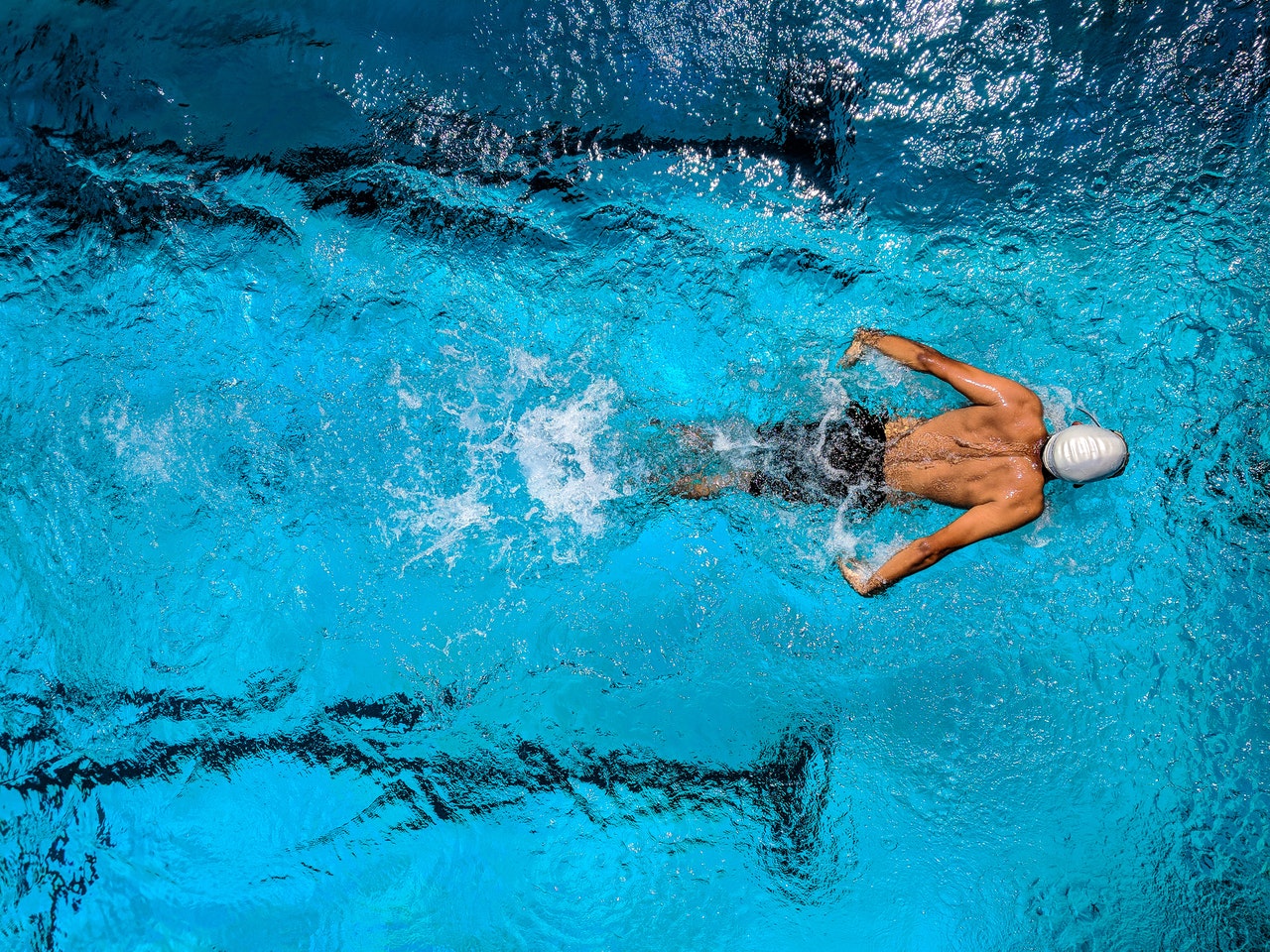Do you love being in the water but find swimming laps insufferably boring? If so, you’re far from alone. But don’t worry - there are plenty of ways to work out in the water that don’t involve swimming up and down in lanes. In fact, adding a few aquatic exercises to your weekly workout routine allows you to enjoy being in the water and could also have several great benefits for your health.
What Are the Health Benefits of Water Exercise?
The buoyancy and resistance properties of water make water exercise an excellent addition to any workout routine. Water provides the combined benefit of providing additional resistance to your workout while also allowing for low-impact movements that put less stress on the joints. As a result, you can perform a wide range of exercises for almost any level of athleticism and enjoy a long list of health benefits.
Like any exercise that gets your heart rate going, aquatic exercise can help you burn calories and build strength while supporting weight loss. Because water provides more body weight support and is lower impact, aqua fitness is a great option for older adults or people with joint or muscle pain.
Overall, when done intentionally, water exercise can help promote:
- Agility
- Balance
- Cardiovascular health
- Strength
- Endurance
- Flexibility
On top of these benefits, water exercise and hydrotherapy can also help promote muscle recovery and reduce muscle soreness following other workouts. If you are preparing for an intense workout, you can use a water workout as a warm-up for your activity.
The Best Pool Exercises To Try
If you have a hard time getting motivated to make it out to the gym or want to supplement an intense workout routine, a pool workout could be the perfect solution. You can enjoy all the benefits of water exercise with just a few simple workouts, and don’t worry—the exercises on this list are all suitable for beginners.

1. Walking in the Water
If you’re not a confident swimmer or want to break up your lap swimming routine, walking in water is a great and easy option. The resistance of the water gives you a great strength and cardiovascular workout that challenges your whole body. It’s also low impact, making it a safe option for people with joint or knee problems.
There is such a thing as a water treadmill, but they’re very expensive, so relatively few gyms have them. If yours does, give it a go. Otherwise, walking along the inside pool edge will help you activate your muscles without the stress on your joints.
2. Water Aerobics
Water aerobics provides an excellent cardio workout. Water aerobics are usually performed in water that is waist-deep or slightly deeper—normally in the shallow end of the swimming pool. Water aerobics actually involve little, if any, swimming. Instead, you perform aerobic exercises in the water, which adds resistance and makes the moves more challenging.
Many fitness centers offer water aerobics classes. An instructor will take you through a routine, often set to music. These can be a fun way to exercise with others and get feedback on your form and technique to ensure you’re performing the exercises safely.
You can also find instructions for specific moves online and devise your own water aerobics routine.

3. Swimming HIIT
Although water exercises are great, you can also enjoy the benefits of swimming back and forth in the pool. High-intensity interval training, or HIIT, takes swimming up a notch to boost your endurance and cardio. This type of exercise involves quick bursts of intense effort interspersed with lower-intensity active rest periods. HIIT gets your heart and lungs working hard, burns fat, and tones muscles.
Try it yourself by alternating swimming at your normal pace with bouts of all-out effort where you go as fast as you possibly can. Another variation on pool HIIT is to perform water aerobics moves at your maximum effort for short bursts, taking an active rest in between each set.

4. Wild Swimming
Wild swimming, sometimes called natural swimming, involves swimming in bodies of water that are not specially designed pools. This might include lakes, rivers, oceans, and so on. Wild swimming is a wonderful way to enjoy nature and the great outdoors, swimming in beautiful surroundings while getting your workout in.
Wild swimming does carry some risks, and we recommend only attempting it if you’re already a strong swimmer. Being in very cold water for long periods of time can be risky, so listen to your body. Rocks, waterfalls, and dirty water also present potential hazards. We recommend joining a wild swimming club or doing your research online to find safe places to swim outdoors in your area. For your safety, try to bring a buddy along or swim in an area with others around.
A little more planning is required than going down to your local pool, but the rewards can be immense.
5. JUMPING JACKS
The best part about pool workouts is that you can translate many standard bodyweight workouts into water. Jumping jacks are a great example, helping you bring a classic cardio workout to a higher-resistance, lower-impact environment.
To do water jumping jacks, stand straight up in the water with your feet together and hands at your sides. Then, jump while moving your legs out to your sides and bring your arms above your head simultaneously. Jump back to the starting position and repeat for three sets of 10 reps. You can add wrist and ankle weights if you want an extra challenge.
6. DEEPWATER BICYCLES
Deep water bicycles help you engage your legs and core muscles, and no real bicycle is required. To perform this exercise, hold onto a pool noodle around your back for balance and stability with your feet positioned out in front of you, close to the pool floor but not touching it.
In this position, bring your right knee toward your chest while kicking your left leg out. In a fluid motion, alternate by bringing your left knee in and kicking your right leg out. Perform this exercise for three sets of about 30 seconds to a minute.
7. PUSH-UPS
Like jumping jacks, push-ups are another great workout to translate to water. To do push-ups in the pool, place your hands on the inside edge while standing on your toes with your feet behind you so that your body is at an angle.
For a similar workout that gives extra attention to your core, you can perform planks by keeping the same position. Instead of leaning against the pool edge, you can hold onto a pool noodle and try to keep your core stable for 30 seconds to a minute.
8. ARM LIFTS
Arm lifts are a great upper-body workout you can do in the water. Stand at a place in the swimming pool where the water reaches up to your shoulders. Hold a foam dumbbell in each hand at your side.
Raise your arms straight up and out to your sides and bring them up to water level. Then, in a controlled motion, lower them down to your sides. Repeat this for three sets of 10 reps. Choose your preferred level of dumbbells to get the most out of this workout.
Additional Tips
Depending on your skill level, you should prepare for being in the water by taking a few extra steps and precautions. For example, consider keeping a kickboard or pool noodle nearby to help provide you with additional stability and support.
Having floatation devices close by is also a good idea if you are just getting used to being in the water. For more intense workouts where the water will really be splashing, consider having a pair of goggles and a swim cap to help you keep maximum performance.
No matter your skill level, if you’re not swimming in an indoor pool, apply plenty of sunscreen. Of course, don’t forget to leave your towel at the poolside before you jump in.
Take Your Water Workout Up a Notch
Although water workouts can provide an easier alternative than traditional workouts, pain and discomfort can still disrupt your process. Fortunately, you don’t have to put up with it when you turn to Incrediwear products.
The technology in Incrediwear sleeves and braces helps optimize blood flow to muscles in the target area to help relieve pain and discomfort. For example, the Incrediwear body sleeve helps to promote the performance of the muscles in your core and lower back.
It’s rare to find a wearable recovery product that can promote pain relief and manage underwater, but Incrediwear recovery products are up to the task. Explore our full collection so you can target pain wherever it pops up. Explore our full collection of wearable recovery products to see how you can eliminate pain from your workouts and day-to-day activities.
Sources:
Aquatic exercise: Healthy, easy on the body | Mayo Clinic Health System
The Properties of Water and their Applications for Training | PMC
Health Benefits of Swimming | Healthy Swimming | Healthy Water | CDC
Read more

The only thing on your mind during the workday is powering through the day, but this might have bigger consequences. After all, a poorly designed workstation could negatively affect our physical he...

National Military Appreciation Month takes place during the month of May. This annual observance, which was first proposed by Senator John McCain, has been celebrated each year since 1999. May was...






2 comments
Hi Kate, it is absolutely fine to wear our products in salt water!
Incrediwear Team
Hi, are your knee braces ok to wear in salt water?
Kate
Leave a comment
All comments are moderated before being published.
This site is protected by hCaptcha and the hCaptcha Privacy Policy and Terms of Service apply.